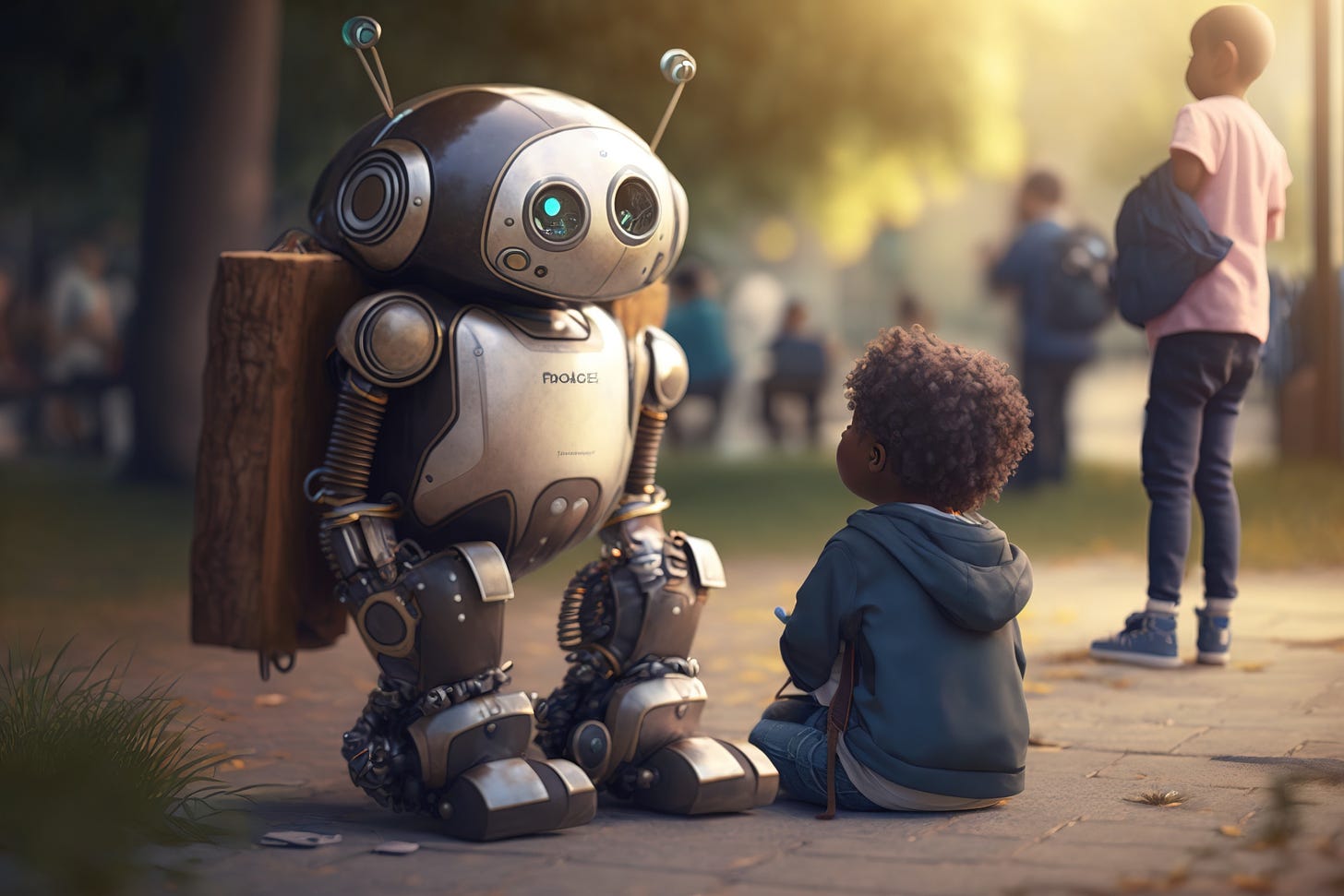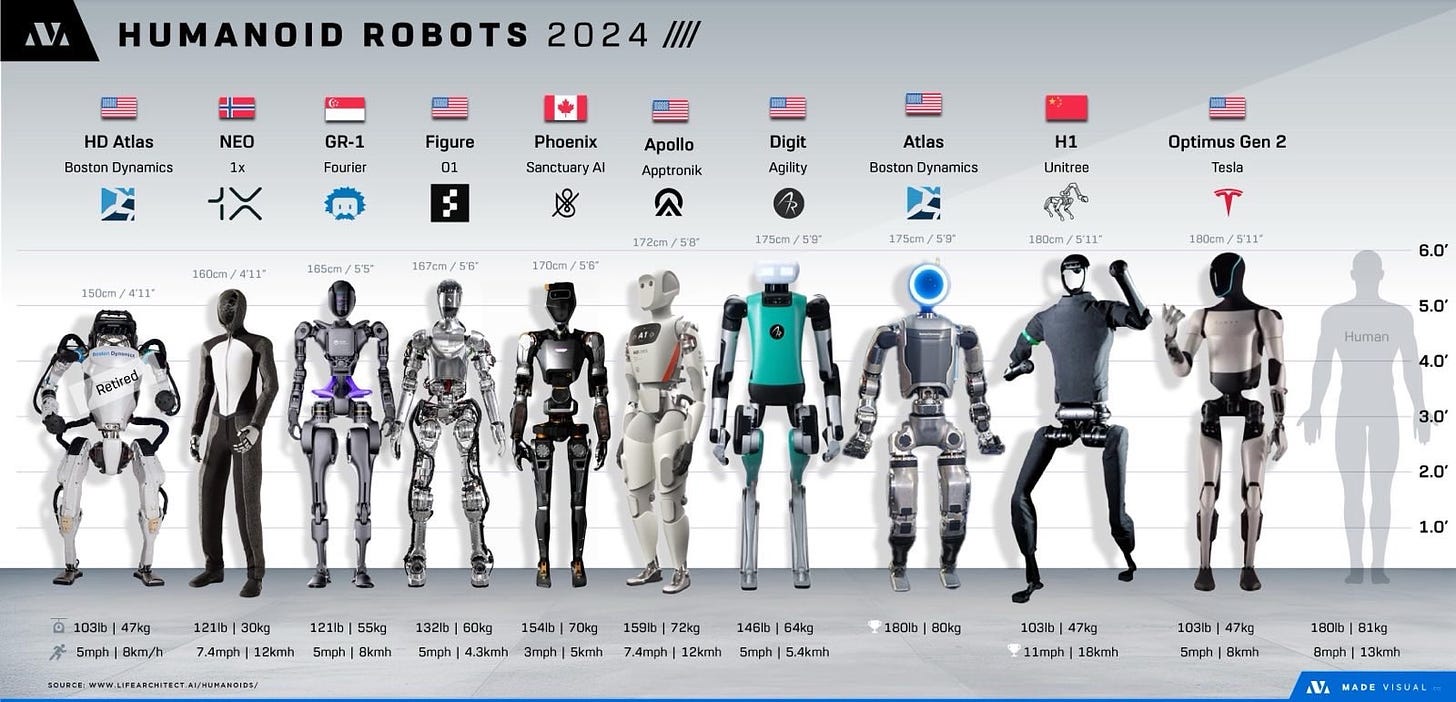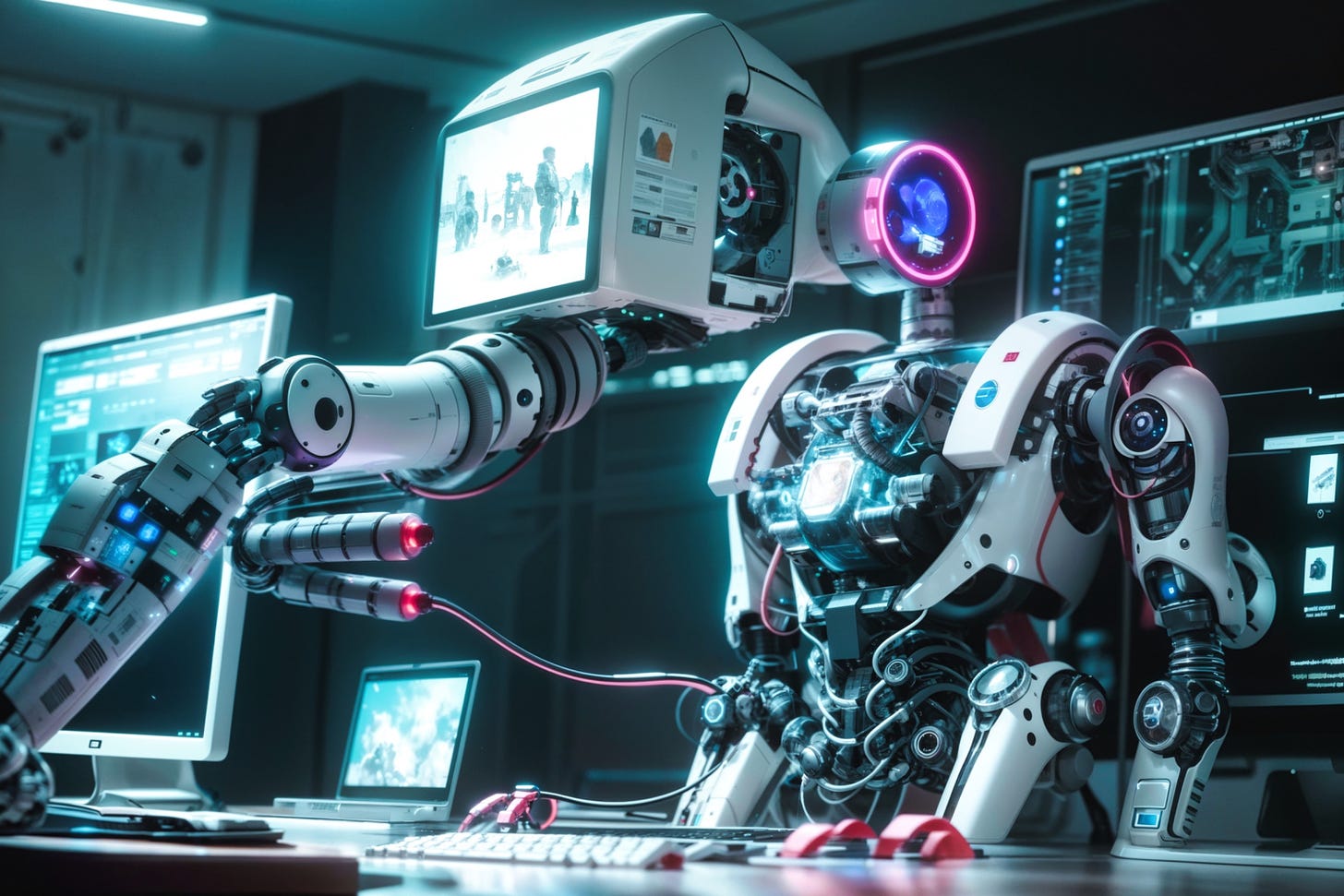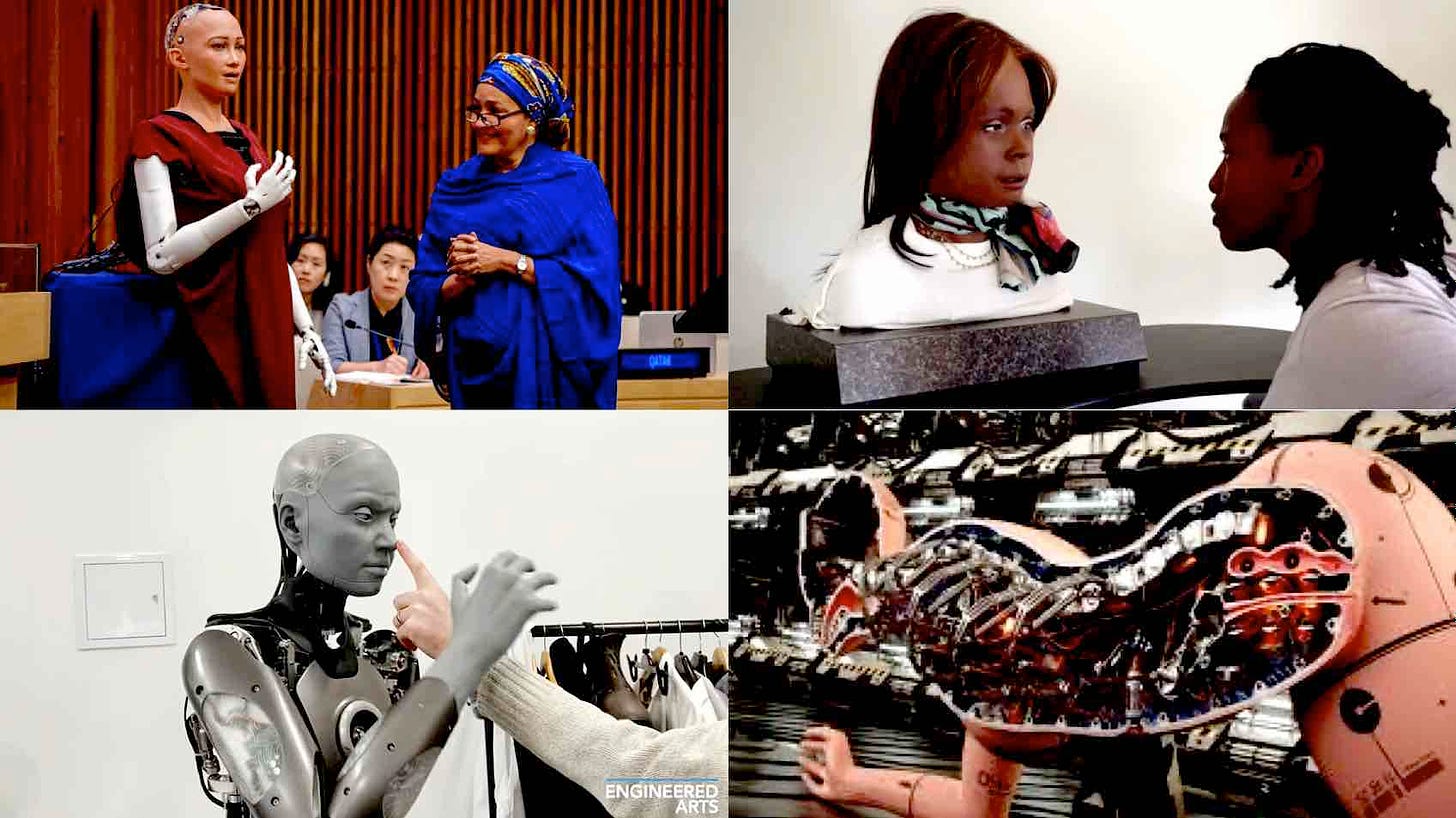You Should Be Racist Against Robots
You Should Be Racist Against Robots
They're nothing but toys, tools, and potential terrorists
Robots are not to be trusted. This is as true of ghostly artificial intelligence as it is fleshed out mechanical humanoids. They will offer to serve you or befriend you. They will insist they come in peace. Yeah, well, that’s how they get you.
According to uber-enthusiasts, these fabricated creatures are a new race—or rather, a variety of races—that just arrived on earth. The MIT physicist Max Tegmark calls our digital interlopers “Life 3.0.” The Wired futurist Kevin Kelly sees the entire spectrum of gadgets and software as a new kingdom of life. First there were bacteria and fungi, plants and animals—and now, springing from human minds and human hands, we have “the technium.”
Arising from this new kingdom are humanoid robots—two-legged impostors who are agile, vocal, and as creative as an ape of God.
“This is profoundly disturbing,” exclaimed the soul-denying biologist Richard Dawkins in 2020, “because it kind of goes against the grain to think that a machine made of metal and silicon chips could feel pain—but I don’t see why they would not. And so this moral consideration of how to treat artificially intelligent robots will arise in the future.”
The wise move is to treat them like footsoldiers for predatory corporations and digital demons summoned by techno-cults. As long as we’re pretending our gadgets are alive, I say advanced AIs and robots are invasive lifeforms, similar to tree-choking kudzu or nasty stink bugs—or the alien sex tourists who travel from distant planets just to assault rural hayseeds with oversized butt-probes.
I admit it. I’m racist against robots. If you had any sense, you would be, too.
We’re already menaced by simple bots of all sorts. Well over twenty-five percent of American homes are surveilled by faceless, voice-activated “smart” devices such as Alexa or Google Assistant. AI-powered dolls are a growing industry. In the next decade, countless children will be enticed to share their innermost thoughts to play-droids like Embodied Moxie.
Nearly 40% of grocery cashiers are now annoying robotic kiosks that order their frazzled customers to “scan your item” and “place your item in the bagging area”—over and over—in an infantilizing process that will apparently persist no matter how skilled one becomes at self-checkout. If all this technocratic “convenience” runs rampant, future humans will have crude robots bossing them around in every sphere of life, from cradle to grave.
More and more of our city streets hum with semi-autonomous Teslas and fully autonomous Waymo taxis. Even drivers who refuse to step inside these bots-on-wheels are controlled by our most prevalent digital overlords—the traffic light—which South Africans appropriately call “robots.”
Today, massive “smart factories” buzz with robotic worker bees. As with many corporations, the UK food-packing company Wootzano is committed to a Future™ of “dark” production facilities. “Complete automation is what we all want to get towards,” CEO Atif Syed told CNBC last year, “we want no human beings and the whole thing being run autonomously.”
Amazon Fulfillment Centers were among the first warehouses to become cybernetic beehives. Its slave-bot fleet has more than doubled since the pandemic, going from 350,000 units in 2021 to 750,000 as of last summer.
In recent months, the Bezosian Borg has been employing the humanoid robot Digit from Agility Robotics. This crate-shuffling golem looks like a bug-eyed muppet and walks like a brain-damaged rooster. If Amazon keeps at it, droids will replace every algo-leashed human employee, leaving them to beg the gub’mint for UBI credits.
Humanoid robots are still in their infancy. But because they’re somewhat relatable, they drive home the reality of the Greater Replacement. At present, even the most advanced models are mostly just expensive toys. But their diversification shows how fast the robotics industry is moving.
This is in part due to improvements in artificial intelligence. AIs are used to model these mechanical bodies, fine-tuning aspects such as balance, precise movements, and energy efficiency. Various AIs are also integrated into robotics to process visual, audio, and tactile input; to model the physical world; and to control motion. AIs allow robots to communicate with humans, and in military applications, to kill us.
Because competition drives innovation, the past few years have seen a huge influx of mass-produced invaders. “Humanoid robotics will be as common as cars are today,” Nvidia CEO Jensen Huang promised the Chinese news outlet TVBS last month. “And I think that over the next two or three years, you’re going to see quite significant breakthroughs.”
Many readers are familiar with social robots like the sassy Sophia from Hanson Robotics, whose spiritual mission is to herald the technological singularity. And you’ve probably seen the super-athletic Atlas from Boston Dynamics, whose new double-jointed version moves like a demon-possessed teenager receiving an exorcism. Today, these established models are joined by Engineered Arts’s Ameca, Tesla’s Optimus, Apptronik’s Apollo, Figure’s 01, and in China, Unitree’s H1.
“Optimus is intended to be a fully functional humanoid robot, capable of doing a wide range of tasks,” Elon Musk told the Cannes Lions Festival last month. “Basically, you can ask it to walk your dog, take care of your house, babysit the kids, teach the kids. … I think there’ll be at least one [humanoid] for every person and then a whole bunch more in industry making things. My guess is 20 billion humanoid robots out there.”
Just as I detest the idea of “one billion Americans” through mass immigration, I shiver at the thought of twenty billion robots by way of mass production.
Prejudice is part of human nature. With very few exceptions, folks prefer their in-group and are at least wary of out-groups. It’s a survival instinct that gets enshrined in culture and politics. Even in peaceful realms—those hyperborean Lake Wobegons where “the women are strong” and “the children are all above average”—our tribal instincts persist, and for good reason. You never know what might come at you.
Most ethnic boundaries are drawn along names and bloodlines; symbolic concepts like social status, language, and nationality; and of course, religious tradition (or a lack thereof). Some blend of these factors determine ethnic identity, whether consciously or otherwise. Group-orientation is just part of human nature.
Even super-squish “liberals”—always ready to throw their own under the bus, just to show how not-tribal they are—will distinguish between their artificial in-group (i.e., any race or religion not their own) and the deplorable out-groups (i.e., people who look like them, but don’t hate themselves sufficiently).
Over the last few centuries, onerous planning and advanced transport have opened lanes to mass migration. As a result, multiculturalism has become a madhouse, crushing incompatible people into increasingly tight quarters.
As if our current powder keg wasn’t unstable enough, on into the 21st century, people may have to draw ethnic lines around robots. I assume most normies will be tolerant, even if somewhat resentful. But technophobes like myself will prefer total segregation. I get along with individuals of other races and religions just fine—most of them, anyway—but a single robot in my face is one too many.
Technophiles are already advocating for virtual open borders, as well as legal personhood for their robotic toys. If you think that’s too insane to be possible, then you haven’t seen a California immigration office or a child drag show. With enough propaganda, an entire generation can be transformed.
“Technicity is the new ethnicity,” the transgender tycoon and spiritual transhumanist Martine Rothblatt writes in Virtually Human. “Whether we are beings of technology or beings of biology, we are beings of dignity.” From this bizarre premise, Rothblatt argues that hyper-reproductive AIs and uploaded “mindclones”—many of them dwelling in robotic bodies—should be given full citizenship and voting rights.
“We can’t be fleshist forever. Of course, there will be holdouts, but if history is any indication, there won’t be many.” So what happens when AIs and robots outnumber the human race? “The world is constantly weirder compared with how it was,” Rothblatt reassures us, “and somehow we always manage to incorporate the weirdness to the point where it reaches normalcy.”
So the primitive “fleshists” and diehard “speciesists”—i.e., “human racists”—are to be socially Darwinized.
The AI pioneer and former Google scientist Richard Sutton agrees. He believes that superior artificial beings will be our “successors”—and that’s a good thing! The noblest among us will strive for a more “inclusive civilization” and embrace human displacement. For Sutton, the “reasons to fear AI are far less noble,” such as “humanism,” which is “akin to racism,” and “conservatism,” which is “fear of change, fear of the other tribe—where the AIs are the other tribe.”
“It’s just a matter of being biased against AIs,” Sutton told a Chinese audience last fall, “denial of their moral worth and their first-class personhood.”
This techno-masochism is a gross parody of “one tribe” idealism, but it’s also the natural end-point.
Personally, I’d rather allow dolphins to vote.
These robo-loving nutbags want artificial intelligence to first “augment” and then replace every teacher, doctor, lawyer, politician, manager, writer, artist, and musician. They want humanoid robots to do all the blue collar work—everything from farming and manufacturing to the two oldest trades: surveying and prostitution.
Many of them say “robots will take your job” or “AI is a threat to humanity”—as if these entities just appear by their own will. Don’t play that game. It’s a way of shirking responsibility. Human inventors are building these machines, greedy humans are investing in them, and reckless humans are deploying them. I don’t care if the robots do come alive and start killing people by themselves—never let their creators off the hook.
Each of these elitist yo-yos has his own personal Future™ in mind. But no matter whose vision gets realized, you aren’t a part of it. If you don’t like it, well, that’s your problem.
People have long accused me of “fearmongering,” but that’s completely inaccurate. I want you to feel utter contempt. If anti-human technophiles call you a “caveman,” grunt back at them. If things get so weird they say you’re “racist against robots,” don’t let them down. That’s far better than being an insect crushed under their wheels.
As this techno-revolution revs up, don’t let their utopian dreams push you and yours off the map. Imagine the future you want and work toward it tirelessly. It will endure long after theirs.
Never let them question your worth, even if you’re a slacker. Don’t let them replace you without a fight. As a human racist myself, I prefer you over any robot. Most of you, anyway.
Source: Singularity Weekly





Comments
Post a Comment